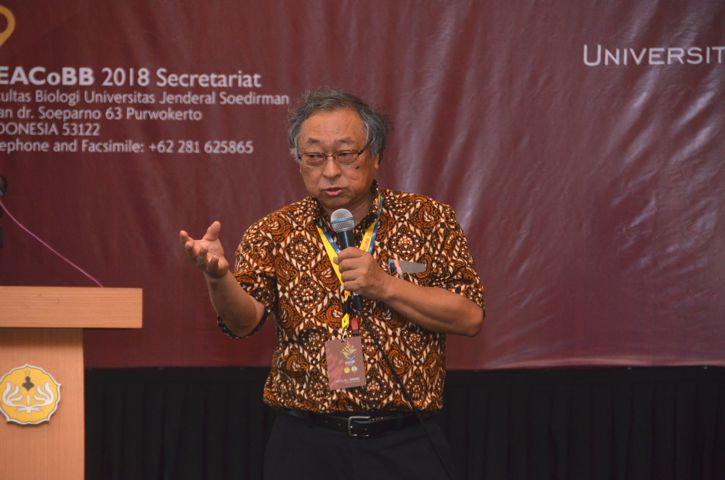High Biodiversity and Productivity Based on Land Surface Metabolisms in Tropical Peatland
Building: Java Heritage Convention
Room: Plenary Hall
Last modified: 2019-07-12
Abstract
Tropical peatland is high carbon and water reservoir ecosystem. By these reasons, tropical peatland is one of most poor nutrient ecosystems, because of low nutrients content and discharging in peat matter (mainly lignin) and of leaching nutrients in water. However, biomass productivity in tropical peatland is higher than that of tropical mineral land, indicating tropical peatland has quite unique metabolic system in land surface of peatland. It is summarized peatland ecosystem from the viewpoints of nutrients status as follow: 1) Peat Matter Element: Peat Matter is Carbon Fiber made of mainly lignin, Peat Matter contain very low nutrients, and desorb nutrients ions (not adsorb nutrients). Therefore, low nutrients content in tree indicate tree require not much nutrients. 2) Water Element: Nutrients and oxygen in water come to serious limiting by leaching and very low solubility into water, respectively. Peatland water is supplied mainly from rain, then also nutrients supply is very low, and nutrients leach gradually by rain (pH 5.6, acidic). As oxygen solubility into water is extremely low, plant root cannot absorb nutrients, because nutrients absorption process depends on respiratory energy, which depend on O2 supplying outside of roots. Also, nodulation and N2 fixation of Legume plants depend highly on oxygen supplying. 3) Oxygen Absorption Strategies: Two strategies on oxygen absorption are observed in native peatland forest such as 1) Aerial root formation for oxygen absorption from air, and 2) Mound root formation for oxygen absorption from air and nutrients absorption from litter on mound. 4) Nutrients Uptake Strategies: Two strategies on nutrients uptake are observed in native peatland forest such as 1) Nutrients recycling from litter on peatland surface by microorganisms activity, 2) N2 fixing by free living N2 fixing bacteria in Rhizosphere (mainly Aerial root). Thus, it is concluded that Nutrients/Oxygen Application is key in high water table of native peatland, then we develop new innovated culture system such as 1) High water table and 2) Nutrients/Oxygen Application from Land Surface, of which cultivation system is called as AeroHydro Culture with such as traits: 1) High water table, 2) Peatland Surface Application of Nutrients/Oxygen such as Natural Composts by Frond or Cover Crops, Slow Release K+ Nutrients as the Coated Fertilizer, Biochar, Humic & Fulvic acids as PGP, and Microorganisms. In conclusion, high water table in peatland is best condition on high plant productivity and high biodiversity including microorganisms in peatland.


Mitsuru Osaki